Brown spiders are a common sight in South Carolina. And with their presence comes a risk of bites that can range from mild irritation to severe symptoms.
It’s essential to be able to identify these spiders and understand their behaviors, habitats, and venomous or non-venomous nature to stay safe.
Today, we’ll discover the most common brown spiders in South Carolina. We’ll provide descriptions, distinguishing characteristics, and pictures to aid in identification. We’ll also provide information on their venom and bite symptoms, prevention and treatment measures, and safety tips.
Whether you’re a resident or a visitor, this guide will equip you with the knowledge to protect yourself and others from brown spiders in South Carolina.
1. The Brown Recluse Spider
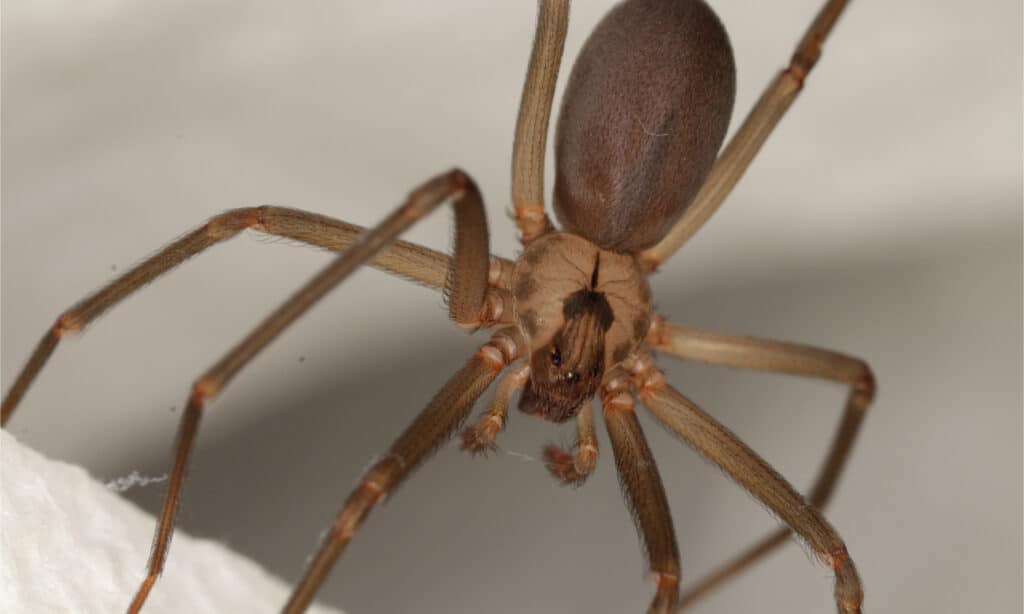
©Nick626/Shutterstock.com
Known scientifically as Loxosceles reclusa, this venomous spider is common in South Carolina.
Distinguishing Characteristics
The brown recluse spider is small and light brown, with a distinctive dark brown violin-shaped marking on its back.
Unlike most spiders with eight eyes, it has six eyes arranged in three pairs.
Habitat and Behavior
These spiders prefer warm, dry environments. That’s why they’re commonly found in areas like:
- Attics
- Basements
- Closets
They’re nocturnal and typically hide during the day.
Brown recluse spiders aren’t aggressive and will only bite if threatened or cornered.
Venom and Symptoms of Bites
Brown recluse spider bites can be severe and require immediate medical attention.
Symptoms of a brown recluse spider bite may not appear immediately. They can include:
- Pain
- Itching
- Redness
- A blister that forms at the site of the bite
In some cases, the bite can cause more severe symptoms like:
- Fever
- Chills
- Muscle aches
Prevention and Treatment Measures
To prevent brown recluse spider bites:
- Wear protective clothing when handling stored items
- Use gloves when working in areas where spiders may be present
- Seal cracks and gaps in walls and foundations.
If you suspect a brown recluse spider has bitten you, seek medical attention immediately. If possible, capture the spider for identification purposes, but don’t handle it with bare hands.
Treatment may include pain medication, antibiotics, and in severe cases, surgery.
2. The Southern House Spider
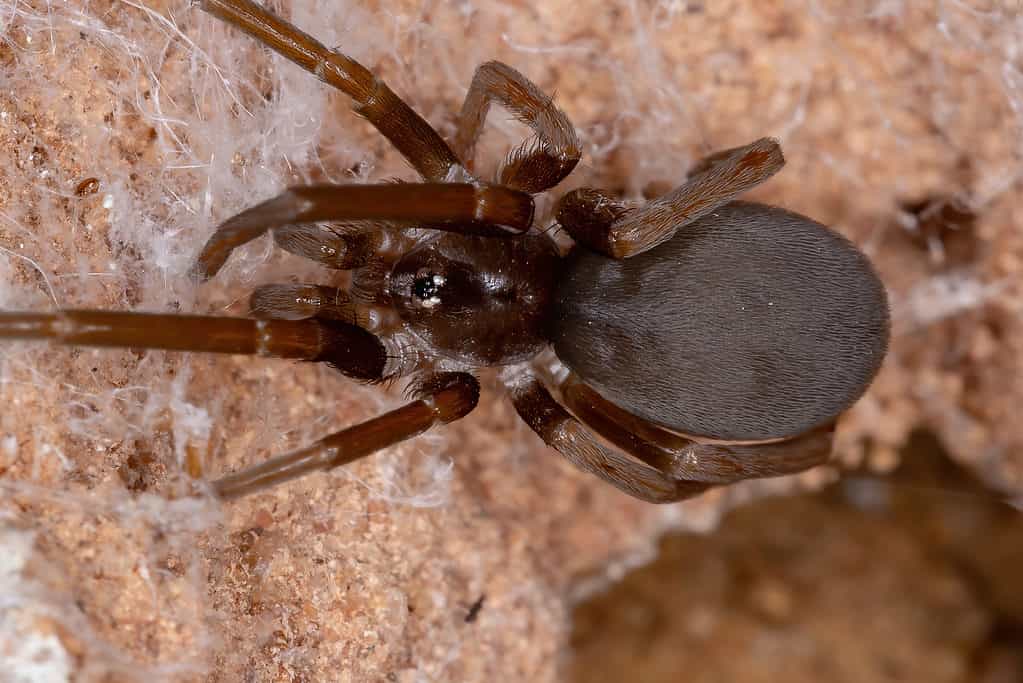
©Vinicius R. Souza/Shutterstock.com
The southern house spider (known by its scientific name Kukulcania hibernates) is a common brown spider in South Carolina.
Distinguishing Characteristics
This is a giant, brown spider with a distinctive abdomen pattern resembling a skull.
Females can grow up to 1.5 in. in length, while males are smaller. They have eight eyes arranged in two rows of four.
Habitat and Behavior
Southern house spiders are commonly found in and around homes, particularly in dark, undisturbed areas such as:
- Basements
- Closets
- Crawl spaces
They’re nocturnal and feed on insects, including other spiders.
Southern house spiders aren’t aggressive and are unlikely to bite unless provoked.
Non-Venomous Nature
Southern house spiders are non-venomous and don’t pose a threat to humans.
They’re beneficial to have around the house as they help to control populations of other insects, including potentially harmful pests such as cockroaches and mosquitoes.
Prevention and Treatment Measures
Keep homes clean and clutter-free to prevent southern house spider infestations.
Also, seal cracks and gaps in walls and foundations to prevent spiders from entering the home.
If a southern house spider is found in the home, it can be safely captured and released outside.
Safety Tips
While southern house spiders aren’t venomous, it’s still important to exercise caution around all spiders. If a spider bites you and you experience severe pain, swelling, or difficulty breathing, seek medical attention immediately.
3. The Wolf Spider
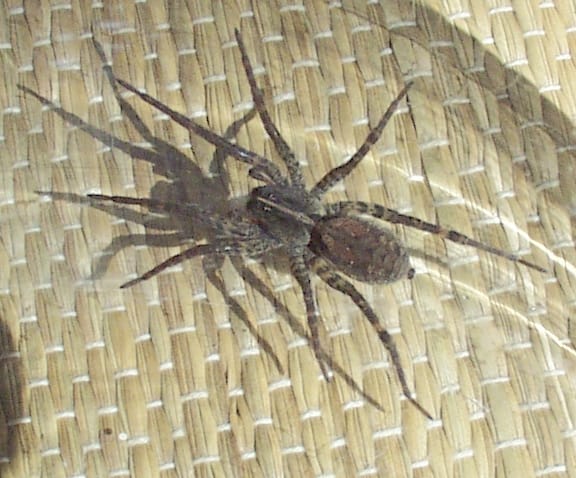
©No machine-readable author provided. Patrick Edwin Moran assumed (based on copyright claims) / CC BY-SA 3.0 – License
Wolf spiders (which belong to the Lycosidae family) are large, hairy spiders common in South Carolina.
Distinguishing Characteristics
Wolf spiders are large and hairy. They can range from 0.4 to 1.2 inches in length. They have two large eyes in the center of their head, which are used for hunting prey.
They’re typically brown or gray with black, white, or tan markings on their bodies and legs.
Habitat and Behavior
Wolf spiders are found in various habitats, including:
- Forests
- Fields
- Residential areas
Although wolf spiders are active hunters, they don’t spin webs for catching prey. Wolf Spiders are typically nocturnal and can be found wandering around at night.
Non-Venomous Nature
Wolf spiders are non-venomous and don’t pose a threat to humans. While they may bite if provoked, their bites are not typically harmful and may only cause minor swelling and itching.
Prevention and Treatment Measures
Seal cracks and gaps in walls and foundations to prevent wolf spiders from entering the home. Also, remove any clutter or debris in and around the home to eliminate hiding places for spiders.
If a wolf spider is found inside the home, it can be safely captured and released outside.
Safety Tips
While wolf spiders aren’t typically harmful to humans, still exercise caution around all spiders.
If a spider bites you and you experience severe pain, swelling, or difficulty breathing, seek medical attention immediately.
4. The Funnel-Web Spider
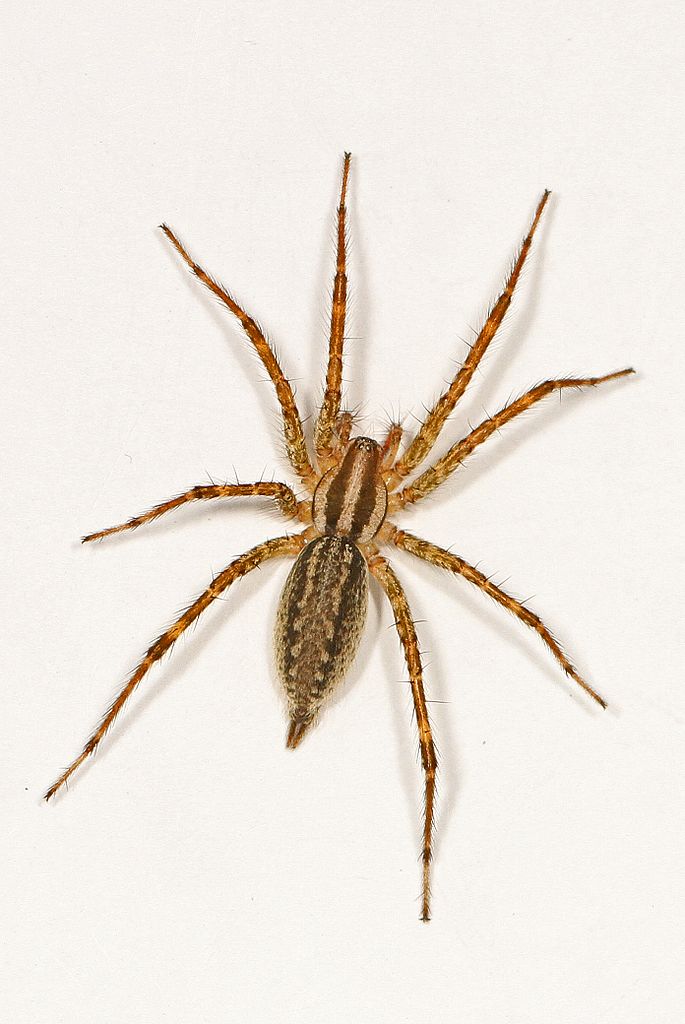
©Judy Gallagher / flickr – License
Funnel-web spiders (that belong to the Agelenidae family) are a common brown spider in South Carolina.
Distinguishing Characteristics
Funnel-web spiders are brown with a slightly elongated body shape.
They’re typically small, ranging from 0.2 to 1.5 in. in length. They have eight eyes arranged in two rows and a unique funnel-shaped web that they use to catch prey.
Habitat and Behavior
Funnel-web spiders are typically found in:
- Gardens
- Fields
- Forests
They’re active hunters and use their funnel-shaped webs to trap prey.
Funnel-web spiders are typically nocturnal. However, you can find them wandering around at night.
Venomous Nature
Funnel-web spiders are venomous. Their bites can cause moderate to severe symptoms, including:
- Pain
- Swelling
- Redness at the site of the bite
In rare cases, bites can cause more serious symptoms like
- Nausea
- Vomiting
- Muscle cramps
Prevention and Treatment Measures
Seal cracks and gaps in walls and foundations to prevent funnel web spiders from entering the home. Remove any clutter or debris in and around the home to eliminate hiding places for spiders.
If a funnel web spider is found inside the home, it should be safely captured and removed. However, if one bites you, seek medical attention immediately.
Safety Tips
Exercise caution around funnel web spiders and all spiders. If you encounter a spider and are unsure of its identity, avoid contact and contact a pest control professional for identification and removal.
If a spider bites you and you experience severe pain, swelling, or difficulty breathing, seek medical attention immediately.
5. The Yellow Sac Spider
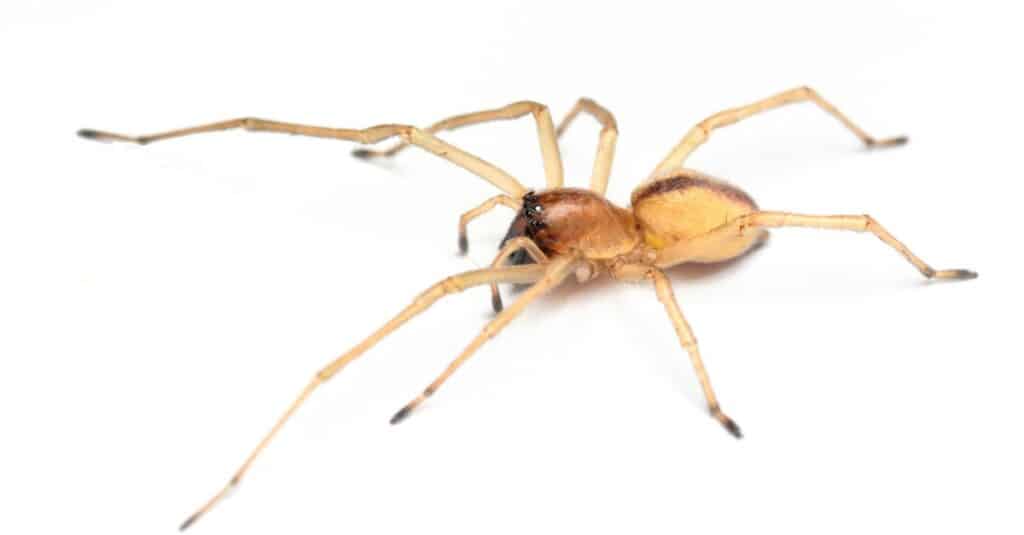
©D. Kucharski K. Kucharska/Shutterstock.com
Yellow sac spiders (scientific name: Cheiracanthium inclusum) are a common brown spider in South Carolina.
Distinguishing Characteristics
Yellow sac spiders are small, ranging from 0.25 to 0.5 in. in length. They have a pale yellow or greenish-yellow body with slightly darker legs. They have eight eyes arranged in two rows and two long fangs used to capture prey.
Habitat and Behavior
Yellow sac spiders are typically found in homes, particularly in the corners of walls and ceilings.
Like wolf spiders, yellow sac spiders are active hunters who don’t use webs for catching prey. Yellow sac spiders are typically nocturnal; you can find them wandering around at night.
Venomous Nature
Yellow sac spiders are venomous, and their bites can cause mild to moderate symptoms such as:
- Redness
- Swelling
- Itching at the site of the bite
In rare cases, bites can cause more serious symptoms such as:
- Nausea
- Headaches
- Fatigue
Prevention and Treatment Measures
Seal cracks and gaps in walls and foundations to prevent yellow sac Spiders from entering the home.
Remove any clutter or debris in and around the home to eliminate hiding places for spiders.
If you find a yellow sac spider in your home, safely capture and remove it.
Should a yellow sac spider bites you, clean the bite area with soap and water. If swollen, you can apply a cold compress to reduce the swelling.
Safety Tips
Exercise caution around yellow sac spiders and all spiders.
If you encounter a spider and are unsure of its identity, avoid contact and instead contact a pest control professional for identification and removal.
If a spider bites you and you experience severe pain, swelling, or difficulty breathing, seek medical attention immediately.
6. The Jumping Spider
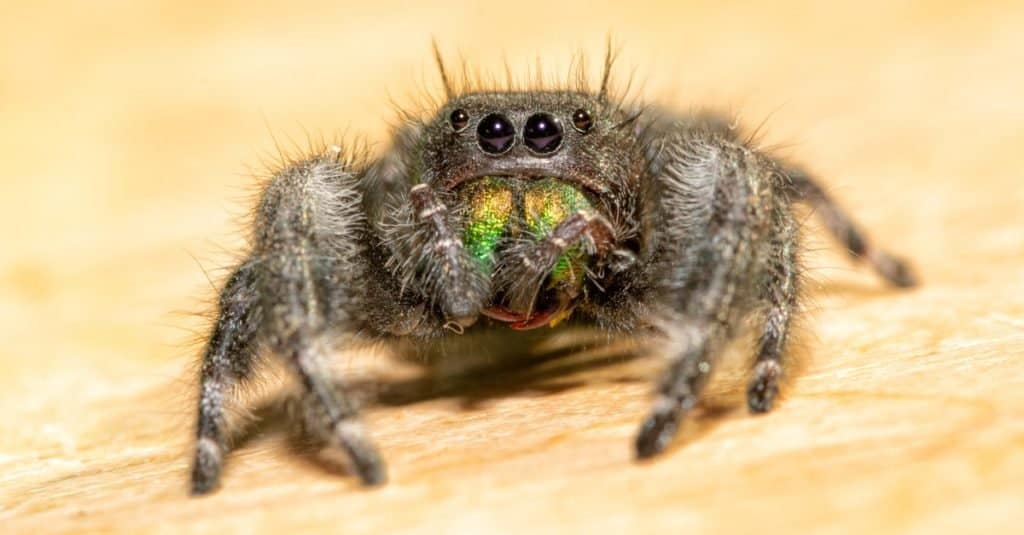
©Sari ONeal/Shutterstock.com
Jumping spiders (which belong to the Salticidae family) are a diverse group of spiders found throughout South Carolina. These spiders’ hunting behavior and visual acuity are unique, making them fascinating to observe.
Distinguishing Characteristics
Jumping spiders are small to medium-sized, ranging from 1/8 to 3/4 inches long. Their compact bodies and large, forward-facing eyes give them excellent vision.
They’re typically brown or black with distinctive body and leg markings.
Habitat and Behavior
You can find jumping spiders in various habitats, including:
- Fields
- Forests
- Homes
They’re active hunters, using their excellent vision to stalk and pounce on prey.
Although these spiders don’t spin webs, they may use silk to create a retreat or line to safety.
Venomous Nature
Jumping spiders are venomous, but their bites aren’t typically harmful to humans.
Bites may cause slight swelling or itching, but symptoms usually resolve on their own within a few hours.
Prevention and Treatment Measures
Seal cracks and gaps in walls and foundations to prevent jumping spiders from entering the home.
Remove any clutter or debris in and around the home to eliminate hiding places for spiders.
If you find a jumping spider inside the home, safely capture and release it outside. If a jumping spider bites you and you experience severe pain or swelling, seek medical attention.
Safety Tips
Jumping Spiders are generally harmless and beneficial in controlling other insect populations. However, exercise caution around spiders. If you encounter a spider and are unsure of its identity, it is best to avoid contact and contact a pest control professional for identification and removal.
7. The Orb Weaver Spider
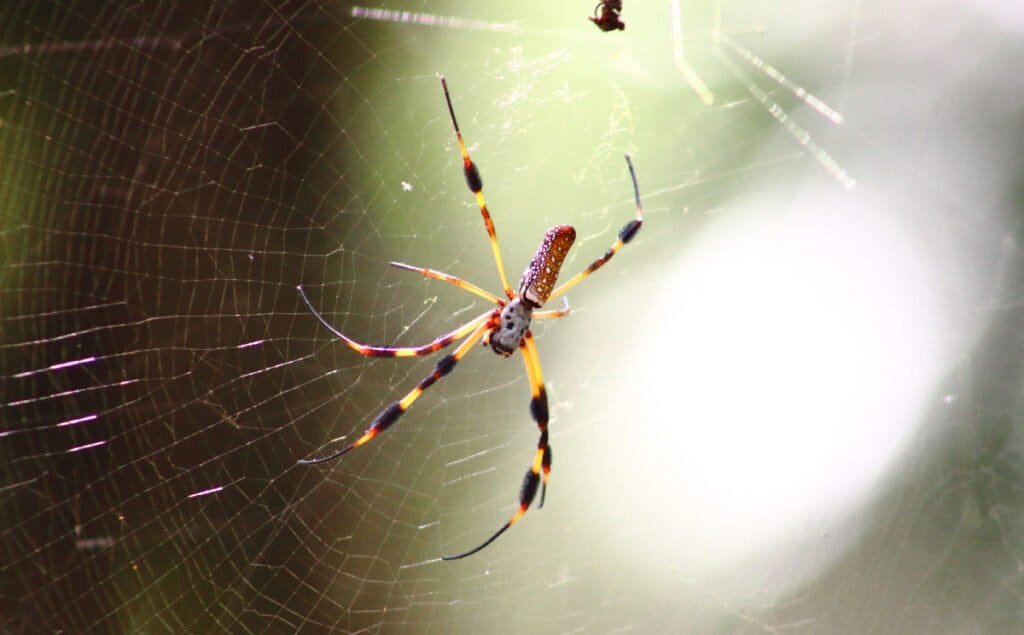
©Max Rossa/Shutterstock.com
Orb weaver spiders (that belong to the Araneidae family) are a common type of spider in South Carolina. These spiders are known for their intricate webs and distinct appearance.
Distinguishing Characteristics
Orb weaver spiders range from small to large, with a 1/8- to 1-inch body length.
They have round abdomens and long, spindly legs. Their webs are complex and circular. They’re known for their bright colors and distinct body and leg markings.
Habitat and Behavior
Orb weaver spiders are found in various habitats, including:
- Fields
- Forests
- Gardens
They build their webs in open areas to capture flying insects such as moths and flies. Orb weaver spiders aren’t aggressive and will usually retreat if disturbed.
Venomous Nature
Orb weaver spiders are venomous, but their bites are not typically harmful to humans. Symptoms may include:
- Mild pain
- Swelling
- Itching
But they usually resolve on their own within a few hours.
Prevention and Treatment Measures
Seal cracks and gaps in walls and foundations to prevent orb weaver spiders from entering the home. Remove any clutter or debris in and around the home to eliminate hiding places for spiders.
If you find an orb weaver spider inside the home, safely capture and release it outside.
See medical attention if you are bitten by an orb weaver spider and experience severe pain or swelling.
Safety Tips
Orb weaver spiders are generally harmless and beneficial in controlling other insect populations. But exercise caution around all spiders.
If you encounter a spider and are unsure of its identity, avoid contact and instead call a pest control professional for identification and removal.
Wrapping Up
South Carolina is home to various brown spiders, each with its unique characteristics and behaviors.
While some are venomous, most aren’t harmful to humans and are beneficial in controlling other insect populations.
Understanding their habitats, behaviors, and safety tips allows us to coexist with these spiders safely and respectfully. If you have concerns about spiders in your home, contacting a pest control professional for identification and removal is always best.
The post Discover 7 Brown Spiders in South Carolina appeared first on AZ Animals.
from Animal News, Facts, Rankings, and More! - AZ Animals https://ift.tt/HjwuTfV